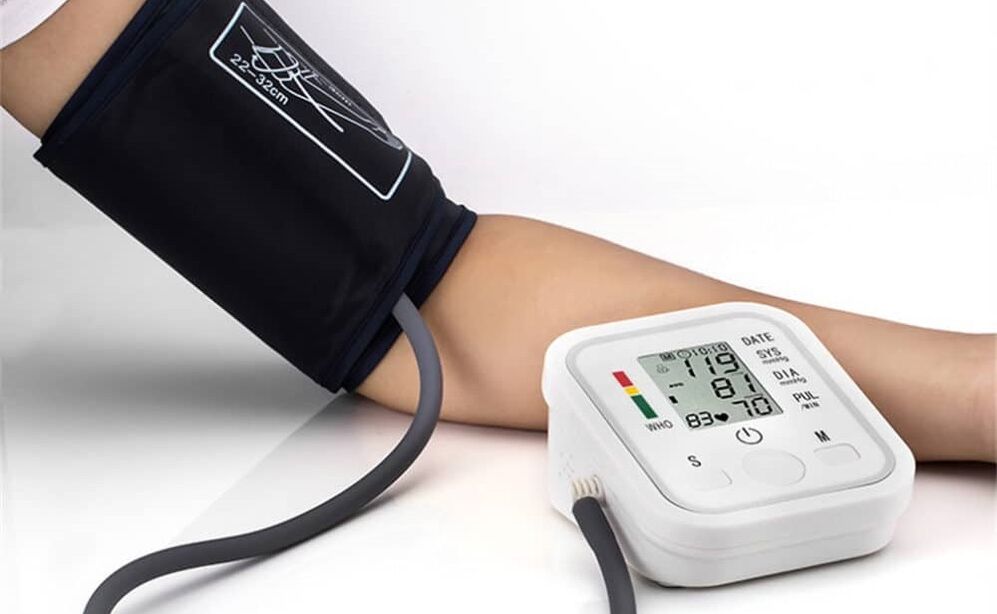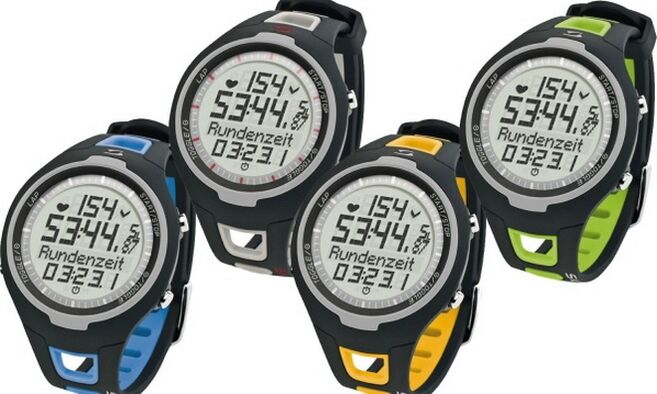The third population of the globe has signs of hypertension. Hypertension pressure causes stenosis and vascular damage, and sometimes a hemorrhagic heart attack. Therefore, even healthy people are extremely important to know what pressure is, what affects it, what indicators can be considered the norm, what numbers in the tonometer should serve as a signal for the beginning of the treatment.
The essence of the concept
Blood pressure is due to the power of its effect on the main and peripheral vessels. Pressure indicators depend directly on several factors:
- vascular elasticity;
- cardiac contractions;
- The volume of blood pumped from heart for a certain period of time.
The value of blood pressure (blood pressure) is the custom of writing in the form of a relationship in which:
- The upper digit, large systolic pressure (with a contraction of the heart);
- The lower pressure of the digit, smaller and diastolic (between cardiac contractions).
Blood pressure can change, with a change in body position, during physical exercises, with excess nervous excess, at rest or after eating. If a person does not experience health problems, after a short time the pressure is stabilized. With hypertension, their indicators increases are preserved for quite some time. In hypertensive patients, acute fluctuations are observed in blood pressure. Normal after sleep, after eating it, then decrease. The afternoon pressure indicators generally exceed the morning, and at night they sometimes fall abruptly.

Analyzing blood pressure indicators, more value generally joins the upper number. Systolic pressure increases that the main risk factors for the development of cardiovascular pathologies in patients are over 50 years old. In the vast majority of people, it increases throughout the years that are carried out to the fact that the main arteries lose their elasticity and expose the atherosclerotic plaques.
Standard and pathology
Blood pressure is an individual indicator, depending on age, surrounding conditions, the pathologies that accompany and even from the time of day. But there are average medical indicators. Having discovered what pressure the patient has, the doctor determines: the hypertension is or a variant of the norm.
Blood pressure in patients over 18 years
The systematic pressure control will help avoid the serious consequences of hypertension, since the pathological changes in the indicators will be seen in a timely manner.
Reasons for the deviation of the norm
Blood pressure never changes without reason. Its fluctuations can be caused by diseases of the cardiovascular, digestive genitourinary system, traumatic brain injuries. But not always the factors that cause change are due to pathologies. The growth of blood pressure indicators often occurs due to:
- allergic reactions;
- stressful situations;
- hormonal failures;
- smoking;
- alcohol abuse;
- climate dependence;
- Taking some drugs;
- overwork;
- dehydration;
- eat fatty foods;
- excessive amount of salt consumed;
- Hypodinamia or, on the contrary, physical tension.

The reason to increase pressure can be changes related to age in the body and hereditary predisposition.
Clinical manifestations
The increase in blood pressure is very remarkable. The visual symptoms of pathological changes are more likely to serve:
- Acute headache (usually in temples and back of the head), often accompanied by vomiting reflexes;
- skin redness (sometimes the vessels appear);
- pronounced weakness, noise in the ears, flies in front of the eyes;
- redness of eye proteins (sometimes violation of visual acuity);
- dyspnoea;
- pain behind the sternum;
- shivers;
- insomnia;
- heartbeat;
- Increase in sweating.
In the presence of such symptoms, consult a doctor. Early hypertension is dangerous asymptomatic. A person sometimes does not even think about the fact that the pressure may have increased.
With greater diet pressure, it is necessary to include products that can effectively decompose fats and prevent thrombosis.
Diagnosis of changes
After 20 years, it is recommended to measure the pressure during the exams. If it is higher than the standard, the doctor prescribes additional tests. The high indicators of a moment do not always indicate the presence of hypertension. The disease is diagnosed if an increase in the indicators with several consecutive exams are observed, as well as if they are preserved after three months of compliance with the doctor's instructions to adjust the lifestyle.
Autiagnosis in the pulse
Without a medical device, it is impossible to determine the pressure indicators precisely, but the pulse can assume the presence of negative changes. When applying the ring and index fingers to the carbon artery, the number of heart curves in 30 seconds must be calculated and multiply the resulting figure by two (the number of beats per minute). The pulse equal to 60-80 shots is considered normal. With greater pressure, the pulse feels without difficulty. If there is a heart rate monitor, you can use it.

Using a tonometer
To accurately measure blood pressure, several types of tonometers are used. The device structures are distinguished by the principle of action. Mercury tonometers were replaced by pneumatic and then electronic devices. The latter can easily use anyone who doesn't even have medical education. They are characterized by compactness, precision and ease of use.
In general, these tonometers show not only systemolic and diastolic pressure indicators, but also the pulse frequency. At the same time, the previous measurements are "remembered" by which experts monitor the dynamics of changes in blood pressure indicators in each specific patient.
Spider rights
Blood pressure measurement must be addressed with maximum attention. This applies to both specialists and patients themselves who monitor the pressure level independently. There are certain rules:
- The day before the measurement, you must leave tonic drinks and smoking;
- The day of the measurement, you should not use eye and nostrils;
- Measure the pressure half an hour after eating;
- Before applying the tonometer sleeve, the patient must take a convenient position by placing a relaxed hand on a flat hard surface;
- The sleeve must be placed in the middle of the shoulder. From below its edge it must be 2, 5 cm of the deepening of the elbow. The air tubes must be along the midline of the shoulder;
- Between the fist, located at the same level with the heart, and the shoulder must be left the space in which the finger is easily placed;
- During the tonometer operation, absolute calm must be maintained.
First, experts recommend measuring pressure in both hands, then only in which the highest indicators "delivers". If the measurement is carried out outside the walls of the medical institution, the patient is recommended to make a "accounting" notebook and enter the day, time and measures. How often do measurements, determines the doctor.
Possible consequences
High blood pressure with hypertension is loaded with hypertensive crises - sudden jumps from critics. These states cause a strong expansion of the blood vessels that can be broken. In a series of consequences, hypertension is distinguished:
- Eye problems (reduction of visual acuity, hemorrhage);
- kidney failure;
- heart ischemia;
- heart failure;
- angina pectoris;
- stroke;
- heart attack;
- impotence;
- swelling of light and brain;
- death.
At the risk of exfoliating the aorta aneurysm, it is recommended to demolish the pressure as quickly as possible. And with brain disorders, this must be done without hurry, otherwise they will be aggravated.
High blood pressure often causes disability and even the death of the patient.
Domestic reaction
With a hypertensive crisis (the superior pressure above 200 mm Hg), it must urgently call an ambulance equipment and, before its arrival, begin to take measures to eliminate the symptoms. With a moderate increase in pressure, you can act independently.
WARNING MEASURES
If greater pressure signs occur, it is necessary to measure their indicators. The headache, nausea, weakness can occur for other reasons. If the pressure really increases, it is deduced:
- ensure peace, attenuation and silence (even in the workplace);
- provide fresh air access;
- Go to bed, raising your head (at work, if there is no shape, sit comfortably);
- do breathing exercises (diaphragmatic breathing focused on exhalation);
- Massage the area and head of the necklace (it is desirable that family or friends do this);
- Drink a diuretic broth (parsley, line, green or kidney tea, pink).
These measures reduce the pressure slowly and it is more likely to avoid the development of complications. If they do not help, you must communicate with a cardiologist.
Quick effect
Patients with an active lifestyle often face the problem of rapid pressure reduction. Drug drugs can do this, but they should be used carefully to avoid overdose, reduced pressure too quickly and other complications. The treating doctor must prescribe medications. The pressure quickly and safely reduces the pressure will help:
- peace;
- Head cooling compression;
- Hot limb baths (not hot! ). You can use a water container or a heating, mustard pad;
- Salting Phytchai (Valerian, Motherwort, Manzanilla, Mint, Lemon Balm).
In the absence of the expected effect, the measures listed are complemented with medications.
Homemade homemade kit
With regularly emerging problems with pressure on the composition of the home kit, they should always be special medications.
The absence of drug drugs can be compensated by using a "constant" drug, but its effect will be noticed only after one or two hours after taking. Accept pharmaceutical products, follow:
- Use only the funds prescribed by the doctor;
- Do not mix drugs;
- Dissolve the "emergency care" tablets, and do not swallow;
- Take the medication that you are lying (after taking, remain in a horizontal position for another 30 minutes). If necessary, it must be raised slowly.
By accepting pharmaceutical products, it is necessary to pay attention to contraindications and side effects.
Inevitable restrictions
With greater pressure to avoid the development of negative consequences, it is necessary to adhere to certain restrictions:
- Within 24 hours after pressure stabilization, it avoids greater physical activity;
- Avoid psycho -emotional overloads, with the inevitable occurrence of stressful situations, take sedatives;
- Reche the use of alcohol, drinks containing caffeines and smoking.
It should be excluded from the diet for fatty and too salty foods (smoked meats, canned foods, even). After normalizing the pressure for a couple of days, the amount of liquid consumed must be limited.
The treatment of hypertension depends on the type of increased pressure, as well as the phases of the pathological process. It is possible to use combined monotherapy and. After the exhaustive diagnosis and medications to prescribe, the cardiologist will give recommendations to maintain normal pressure, as well as in the necessary measures when it has an abrupt increase.



























